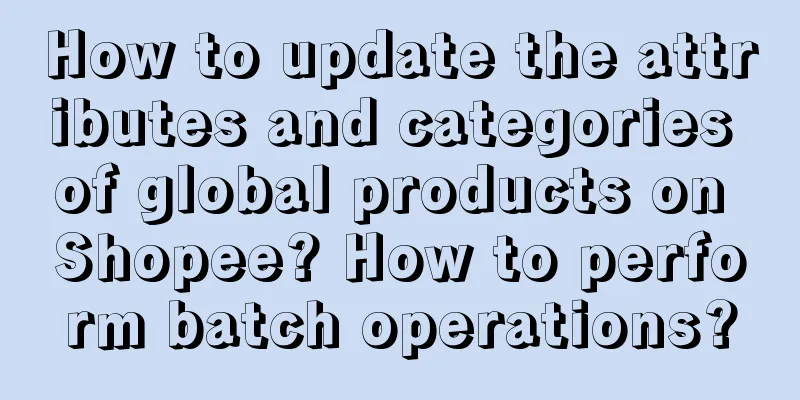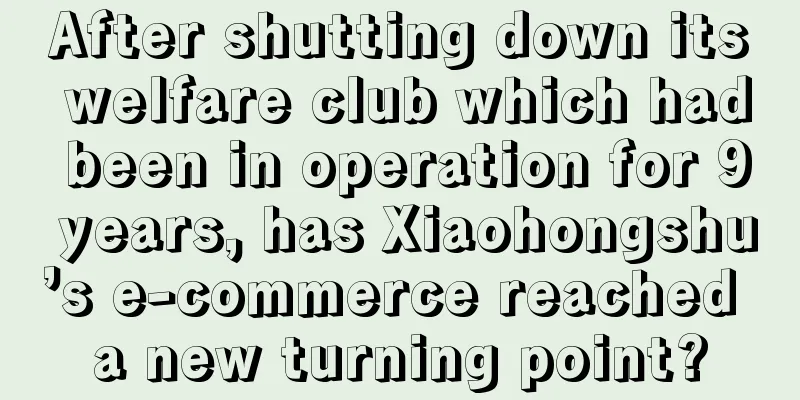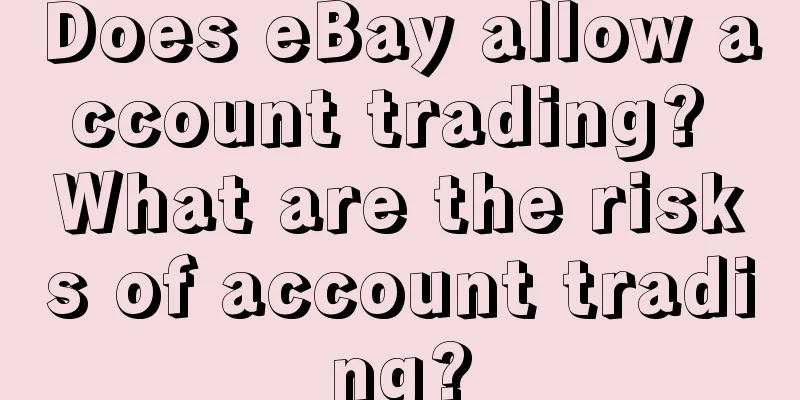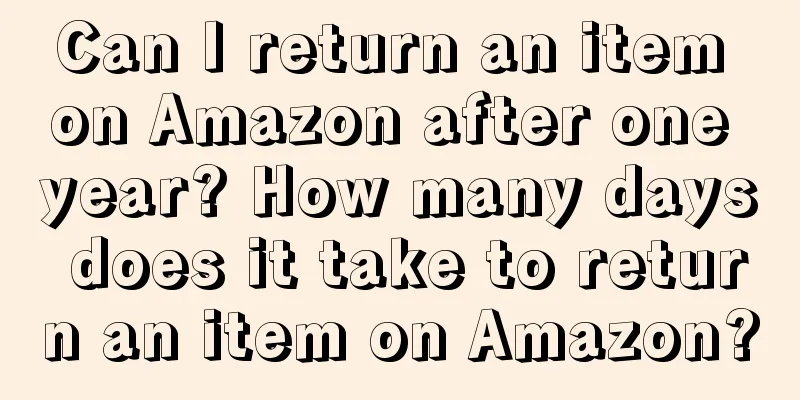The underlying logic of category marketing

What is a category and what is category marketing? In this article, we will give a systematic understanding. 1. The Nature of the CategoryThere are three perspectives on the nature of categories:
Generally speaking, category marketing is a type of content marketing that is classified by a specific theme. This classification has the potential to generate huge commercial value. Let’s analyze the essence of categories from the perspective of commercial value. 2. Category is the shopping path from track to productLet’s take the “clothing track” as an example: the market size of the entire clothing industry is about 1 trillion. When consumers have clothing purchase needs, how do they get from the trillion-dollar scale to a certain product? 1. If customers go to buy clothes, there are usually two pathsRetail path, pre-sale path.
Is the customer shopping path that simple? Let’s take a look at a relatively complete customer shopping path map, which is divided into three categories: shelf commerce, content commerce, and smart commerce. It turns out that the conventional "retail path" and "pre-sale path" both belong to shelf business. 3. So what is content business?Traditional positioning theory would say: Gree = good air conditioner, Red Bull = well-known functional beverage. Both of these belong to the brand = category under shelf business, and are content categories directly linked to purposeful, planned, and high-desire consumers. When we go to the zoo, do we want to visit China's national treasures? When we go to Beijing, do we want to visit Beijing's landmarks? Obviously, these are all shopping paths for content commerce. China's national treasures and Beijing's landmarks are all content categories with social group memory, not product categories, nor industry categories, let alone customer categories. Should women buy yoga clothes? Should men buy jackets? These two categories have strong industry attributes, strong product attributes, and are combined with life scenarios. Xiaomi is the first product for young people; MUJI is a basic product with minimalist aesthetics. Both of them are content categories with weak industry attributes and weak product attributes, but strong customer attributes and strong emotional value. Why do fans buy literary works from Dong Yuhui? Why do young women buy cosmetics from Li Jiaqi? These two are both content categories with weak industry attributes, weak customer attributes, strong IP personality, and strong emotional value. Shelf business is already a traditional business (including Tmall, JD.com, Pinduoduo, etc.). Content business is an emerging business (not only Xiaohongshu, Douyin, Kuaishou, etc., but also content dissemination beyond traditional advertising, which can also bring commercial value of brand-effect integration). Both shelf commerce and content commerce require new content media. Category is a new type of content media, which is the shopping path from the track to the product. 2. Category is the retail experience from store to formatIn this part, let’s talk about category marketing in offline retail. For offline retail, the core asset is the store. The essence of retail is efficiency, cost, and experience. This efficiency includes both customer docking efficiency and supply chain docking efficiency, and more importantly, the turnover efficiency of matching people, places, and goods. For traditional offline retail, even if they are all stores, customers’ perception and experience are indeed very different. In consumers’ perception, stores include hypermarkets, convenience stores, discount stores, fresh food stores, fruit and vegetable stores, community stores, specialty stores, comprehensive supermarkets, warehouse membership stores, and so on. There is a concept in cognitive psychology called "pattern recognition". When we encounter a large amount of discrete information, our cognitive bandwidth is limited, so we should try our best to extract a concise pattern from this large amount of discrete information. In this pattern, the whole takes precedence over the individual information. For example, if one restaurant has 50 dishes and another restaurant has 60 dishes, which one should we go to for lunch? We refine it into Sichuan cuisine and Cantonese cuisine. Cuisine has become our major decision path for choosing restaurants. In the large-scale customer decision path, cuisine generally takes precedence over ordinary dishes. Let’s go back to the retail industry. There are several scale characteristics:
In addition to the three customer purchase paths mentioned above (enter, browse, and buy), there is another very important one, which is experience. Experience is related to customer impressions and emotions. The intuition of which store to enter in the next round of shopping cycle is one of the key factors promoting it. In this way, we understand. In the offline retail industry, category marketing is a link between the upper and lower levels, working on the business format upwards and the products downwards. The result is that among the vast amount of products, it stands out from the homogeneity of stores, forming a reason for consumption and deepening the shopping experience. 3. Category is the traffic grabber from selling point to entrance In this section, let's talk about category marketing in online e-commerce. Online e-commerce and offline retail are two completely different fields. For online, we need big single products, multi-level progression, using product A to attract traffic (small loss or small profit), product B to undertake (medium gross profit), product C to realize (high gross profit), and product D to put on shelves (this type of product is a regular product and does not need external publicity). In the end, traffic is prioritized and customer operations are strengthened. Online, due to the advantages of digitalization, we are able to capture the decision points of individual customers. Based on the decision points of individual customers, merchants can conduct exposure and reach, or plant interests, or popularize principles, or conduct comparative evaluations. Through these content marketing, they can amplify the selling points of their own products, and then rise to category marketing to create a commercial traffic portal. Here, we need to explain a little. The selling point of a product was originally to increase the conversion rate after traffic came in; now after being upgraded to category marketing, when customers have a desire to consume, there is a certain probability that they will think of this category, thus achieving a gorgeous transformation and turning it into a commercial traffic entrance. For example, the underlying logic of mobile phones is simple and crude: mobile phone = communication + life (music + photography + film and television + games) + office. Suppose we list the customer decision points of mobile phones one by one (see the figure above). Now we know the result. Huawei mobile phones have made the conventional product selling point of camera into the single largest customer decision point through category marketing.
Camera phones have been upgraded from a single-dimensional product selling point to a commercial traffic entrance for content marketing. When buying a mobile phone, many customers attach great importance to the comparison and satisfaction of camera functions, which has fundamentally changed the customer purchase path and the industry competition landscape. It turns out that we can build content infrastructure around product selling points and create a unique category using Internet language. This category may be used both online and offline, and eventually become a decision-making criterion for customers, forming a commercial traffic entrance. When we say first-class companies set standards, we are not referring to industry standards, but customer decision-making standards. 4. Four major strategies for category marketingWe have discussed a lot about categories above. So the next step is what are the strategies for category marketing? Let us explain: the four major strategies of category marketing. Let’s look at the above picture first. We roughly divide the business into two categories: one is the business that has reached the volume ceiling (large volume, but slow growth), and the other is the business that has increased both in volume and price (fast growth, but not necessarily large volume). Adding the two dimensions of old categories and new categories, it is divided into four quadrants: category focus, category differentiation, category expansion, and category reshaping. 1. Targeting old categories that have reached their volume ceilingWe need to adopt a category-focused strategy, which is reflected in: improving product efficiency, controlling product quality and stores, and striving to differentiate content and emotions in the context of product homogeneity. 2. Targeting new categories that have reached their volume ceilingWe need to adopt a category differentiation strategy, which is reflected in: small-scenario product lines, large-channel product lines, advantage product lines, trend product lines, content product lines, and scenario product lines. 3. For old product categories with rising volume and priceWe need to adopt a category expansion strategy, which includes: having the organizational capability and strategic determination to quickly and massively seize the market and building a new main channel; laying out differentiated competition before competition intensifies; and matching different innovation capability resources according to different strategic goals. 4. Targeting new product categories with rising volume and priceWe need to adopt a category reshaping strategy, which is reflected in: redefining customers, redefining products, and redefining species. 5. Performance Evaluation of Category MarketingWhat business results can we achieve after we carry out category marketing? Here, we provide a performance evaluation indicator system.
Performance evaluation is inseparable from the digital construction of enterprises. Without data-driven category marketing, it is difficult to quantify and accurately realize the support for performance growth. VI. SummaryThe essence of a category is the classification of business topics from multiple perspectives, such as product attributes, customer needs, content consumption, and social topics. 1. The category has important commercial valueinclude:
2. Category marketing has four major strategiesCategory focus, category differentiation, category expansion, and category reshaping. 3. Good category marketing, combined with data-driven
Therefore, the more accurate the category marketing is, the deeper the commercial value can be excavated. Author: Cao Sheng, public account: Grayscale Cognitive Society |
>>: To interpret the data, I found a very useful seven-step standard method
Recommend
What is the Japanese language proficiency required for Amazon Japan? What is CSBA?
If domestic sellers want to do well in cross-borde...
New tea brands are entering Northeast counties
This article deeply analyzes the phenomenon of new...
How about Amazon Global Payments? What are the advantages?
Amazon's cross-border e-commerce platform has ...
Is hot spots + refined marketing the magic weapon for Yongpu, Xiaoguan Tea, and Yuanqi Forest to stand out?
Brands can attract public interest and attention b...
WeChat e-commerce, this year’s KPI
In the wave of digitalization, WeChat e-commerce, ...
The next e-commerce "new bonus" is on Xiaohongshu
This article deeply analyzes the rise of Xiaohongs...
Is the ozon e-commerce platform easy to operate? Detailed answer
Amazon is not the only choice for cross-border e-c...
Don’t underestimate the value of Apple Live
At 7pm on May 31, Apple's Tmall flagship store...
How does Wish Platform deliver goods? What are the precautions for delivery?
As a platform, Wish actually faces the problem of ...
How to plant grass on 618?
This article describes the methodology of brand pr...
First-hand information | What business opportunities did the Yimeishang Celebrity Festival reveal?
During the "Yimeishang Celebrity Festival&quo...
Is Flipkart legitimate?
As a well-known e-commerce platform in India, Flip...
Membership manager of Wanjia stores: How do I do user operations?
How to operate user in large offline chain franchi...
More and more people are willing to pay for emotions
This article explores the importance and practical...
How to increase traffic for a new Shopee store? Method introduction
Traffic is an important basis for store conversion...









